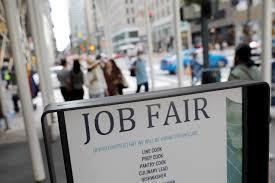
US adds just 73,000 jobs in July, sparks recession fears
The US economy has added a mere 73,000 jobs in July, falling short of Bloomberg’s forecast of 109,000. This dismal job growth has sparked concerns that the country may be heading towards a recession. The unemployment rate has also risen to 4.2% from 4.1% in June, according to the Bureau of Labor Statistics.
The July jobs report, released by the Bureau of Labor Statistics (BLS), showed that the US economy has struggled to gain momentum, with the private sector adding only 63,000 jobs. This is a significant decline from the 100,000 jobs added in June. The manufacturing sector, which has been a bright spot in the economy, shed 15,000 jobs in July, while the construction sector added a mere 6,000 jobs.
The lackluster job growth has raised concerns that the US economy may be heading towards a recession. Josh Bivens, chief economist at the Economic Policy Institute (EPI), said that the jobs report is what entering a recession looks like. “To me, the jobs report is what entering a recession looks like,” he said. “When you have a soft labor market and a big decline in manufacturing jobs, that’s a sign that the economy is weakening.”
The EPI is a non-profit think tank that focuses on issues related to the economy and labor market. Bivens’ views are echoed by many economists, who have been warning of a potential recession in the near future. The International Monetary Fund (IMF) has also warned of a global recession, citing rising trade tensions and slowing economic growth.
The US Federal Reserve has also been keeping a close eye on the job market, as it considers whether to cut interest rates again. The Fed cut interest rates by a quarter percentage point in July, citing concerns about the slowing economy. However, the central bank has also acknowledged that the labor market remains strong, with the unemployment rate at a 50-year low of 3.7%.
The slow job growth in July is attributed to a variety of factors, including the ongoing trade tensions between the US and China. The trade war has led to uncertainty and volatility in the global economy, causing businesses to cut back on investment and hiring. The manufacturing sector, which is heavily reliant on global trade, has been particularly affected by the tariffs imposed by both countries.
Another factor that has contributed to the slow job growth is the decline in the labor force participation rate. The participation rate, which measures the percentage of working-age Americans who are employed or actively looking for work, has declined to 63.4% from its peak of 66.4% in 2009. This decline has reduced the pool of potential workers, making it more difficult for businesses to find qualified employees.
The slow job growth has also led to a rise in unemployment benefits claims. The number of Americans filing for initial unemployment benefits rose by 8,000 to 215,000 in the week ending August 3, according to the Labor Department. While this is still a relatively low level of claims, it is a sign that the labor market is weakening.
The July jobs report has sent shockwaves through the financial markets, with stocks and bonds falling sharply in response to the news. The S&P 500 index fell by 1.4% on the day the report was released, while the yield on the 10-year Treasury bond fell by 5 basis points.
In conclusion, the US economy added just 73,000 jobs in July, falling short of expectations and sparking concerns about a potential recession. The slow job growth is attributed to a variety of factors, including the ongoing trade tensions and the decline in the labor force participation rate. The unemployment rate has also risen to 4.2%, a sign that the labor market is weakening. As the economy continues to slow, it is likely that the Federal Reserve will cut interest rates again to stimulate growth.






